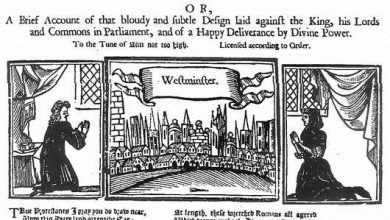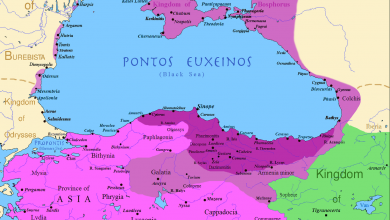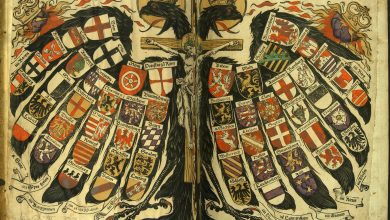A Rome Away From Rome: The First Bulgarian Empire

One of the most common recurring themes in European history is the role played by the legacy of Rome. Due to its prominent role as the first sophisticated polity to unite a large portion of the continent, its military prowess and its numerous achievements in architecture and civics, Rome has always exerted a great fascination on Europeans. It has equally provided a source of legitimacy for a multitude of polities, with over a dozen self-declared successors of Rome across European history. One of the most unlikely and yet successful examples of this legacy is what is now known as the First Bulgarian Empire.
The Beginning
When Simeon I of Bulgaria ascended to the Bulgarian throne in 893 AD, he found himself at the head of a country in transition. The cultural union of Bulgars and Slavs was relatively recent, as was Bulgaria’s conversion to Christianity. At the same time, this conversion had opened new opportunities for the young country as well as an unexpected source of prestige: through the work of Saints Cyril and Methodius, religious and liturgical texts could now be written in what became known as Old Slavonic. Thousands of clergymen took up residence in the monasteries established on the shore of Lake Ohrid, in present-day Macedonia (FYROM), allowing the Bible to be read, and mass to be held in a language close to the vernacular of much of the Balkans.

Simeon I himself had received considerable preparation for his role, studying in Constantinople and thus growing to admire Greek and Latin literature, the Eastern Roman achievements in the realms of administration, and the legacy of Rome in general. Upon his ascension, he set out to turn Bulgaria’s then-capital, Preslav, into a center of culture, arts and craftsmanship that soon eclipsed all competitors in splendor, save for Constantinople itself. With the resulting trade of glass and ceramics came the clergymen as well, spreading Old Slavonic – and with it, Bulgarian prestige and cultural hegemony – to Kievan Rus, Moravia and beyond.
The meteoric rise of Bulgaria placed considerable pressure on all the neighbors it had not yet conquered, first and foremost the Eastern Roman Empire. Relations between the Eastern Romans and the Bulgarians had not always been hostile. The two powers had also enjoyed periods of peace and alliance, most notably during the Second Arab siege of Constantinople. The Umayyad had campaigned against Byzantium for more than twenty years, slowly occupying its territory and then besieging the capital. In August 718 AD, the Bulgarian army had come to the rescue, breaking the siege and destroying the Arab army and thus preventing an Arab invasion of Southeastern Europe.
The Rise of the First Bulgarian Empire

Under Simeon’s reign, tensions between the two raised considerably. A trade dispute over commerce through Thrace led to a war in which the Eastern Romans and the Magyars attacked Bulgaria from two sides. Bulgaria, with help from its Pecheneg allies and under the brilliant military leadership of Simeon, inflicted such a catastrophic defeat on the Magyars that these left the steppes en masse to migrate to the Pannonian basin, where eventually they founded the Kingdom of Hungary. The Byzantines were defeated in turn, and the subsequent peace recognised significant Bulgarian territorial aggrandisement, as well as dominance over trade in the Balkans and reception of an annual tribute from the coffers of Constantinople.
The unilateral Byzantine withdrawal from payment of this tribute would precipitate the events that would ultimately result in Bulgaria declaring itself a direct successor of the Roman Empire. It is to be noted that Simeon himself had manipulated the Byzantine Emperor Alexander into withdrawing from the tribute. Simeon’s ambition was to conquer Constantinople, the city where he had studied in youth, and be crowned there as the Tsar, or Emperor, of a joint Bulgarian-Roman Empire.
Before these plans could come to fruition, however, Alexander died, with a regency council left to take care of his underage son, Constantine VII. Simeon marched south unopposed, and all attempts to placate him with letters and promises came to naught. So it was that in 913 A.D., Simeon I of Bulgaria was crowned “Emperor and Autocrat of all Bulgarians and Romans” outside the walls of Constantinople by none other than Nicholas Mystikos, who was the Orthodox Patriarch as well as the imperial regent. The new Tsar returned to Preslav in triumph, accompanied by his army and his sons, having seemingly accomplished his grandest dream.
The Decline of the Bulgarian Empire
In effect, this new arrangement would not endure for long. Regency in Constantinople came to an abrupt end after a palace coup resulted in the ascension of Constantine VII’s mother as Empress. In the resulting war, Simeon’s successful campaigns nearly brought the Eastern Roman Empire crashing down. However, after a period of stunned acceptance, the Byzantines fought back, refusing to recognize the Bulgarian imperial title and rallying behind their crown. The devastating wars lasted for over a decade, and saw the utter annihilation of a key ally of Constantinople, Serbia, which came under Simeon’s rule, as well as the crippling of the Byzantine armies in 917.
The war finally abated in 924 A.D. with both sides driven to utter exhaustion by the comprehensive economic damage and the catastrophic cost paid in blood. After intense negotiations, the Emperor in Constantinople reclaimed the title of Emperor of the Romans, while Simeon’s title was reduced to that of “Emperor of the Bulgarians“. Byzantine recognition of the imperial dignity of the Bulgarian monarch and the patriarchal dignity of Bulgaria’s patriarch was again confirmed at the conclusion of peace and a Bulgarian–Byzantine dynastic marriage in 927, after Simeon’s death.
Simeon may not have realised his personal ambition in the pursuit of Roman-ness, but Bulgaria could well and truly claim affinity to Rome by the time the war came to a close. At the height of its power, the Bulgarian empire spread from the Danube Bend to the Black Sea and from the Dnieper River to the Adriatic Sea. As a consequence of the adoption and development of Old Slavonic, Bulgaria became the cultural, linguistic and religious center of Slavic Europe. Its capital, Preslav, was clearly designated by Bulgarian literature as the Third Rome, and quickly became one of the richest cities on the continent.

Like so many other self-designated successors of Rome, however, the Bulgarian Empire would not last. The Byzantines eventually recovered from the turbulence at the turn of the millennium, and in 1014, under Basil II, inflicted a crushing defeat on the Bulgarians at the Battle of Kleidion. By 1018, the last Bulgarian strongholds had surrendered to the Byzantines, leading to full incorporation of Bulgarian lands into the Eastern Roman Empire.
The legacy of Preslav’s rule, however, would outlast its political suzerainty, leaving a distinct cultural, linguistic and religious imprint that shaped all subsequent Slavic polities and which endures to this day.





